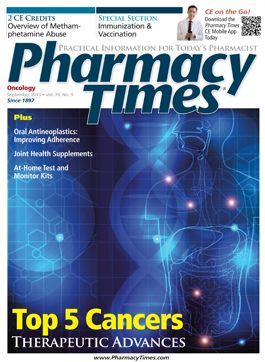Publication
Article
Pharmacy Times
Homeopathic Products: A Growing Segment in OTC?
Author(s):
Homeopathy is becoming increasingly complementary to allopathic medicine.
Homeopathy is becoming increasingly complementary to allopathic medicine.

The future is very bright for natural homeopathic products. Homeopathy continues to grow as shoppers learn that it may temporarily help relieve symptoms of diagnosed conditions. US retail sales of homeopathic and herbal remedies reached $6.4 billion in 2012—up almost 3% from 2011 and growing 16% over the past 5 years—according to Chicago, IL—based market research firm Mintel.1 Homeopathic remedies are safe to use, without known contraindications, and are relatively inexpensive compared with prescription drugs.
Public awareness of homeopathic medicines has grown not only through advertising of these products but also because homeopathy may be a preferred treatment option for individuals seeking ongoing relief from symptoms of chronic conditions.
What Is Homeopathy?
The word homeopathic is derived from the Greek words homeos, meaning similar, and pathos, meaning disease or suffering. Thus, homeopathy means “to treat with a remedy that produces an effect similar to the disease or suffering.”2 Homeopathic doctors choose the proper remedy by following a special rule of nature called the law of similars. This law states “like cures like” or that a medicine can cure a sick person if it can cause similar sickness in a healthy person.2 Further, this principle states that a sick person can be cured by taking very small amounts of ingredients that cause their pain.
Understanding Homeopathic Drug Potency
The principal tenet of homeopathy is the observation that the medicine is more effective as the active ingredient(s) is diluted and potentiated toward its unique optimal balance. Because many homeopathic ingredients are potent, volatile, and sometimes even harmful in their most natural form, homeopathic ingredients are microdiluted just enough to maintain their healing properties while making them safe for human consumption. On a drug ingredient panel, the active ingredient will be followed by a number, then a “C” or an “X” (eg, 12X). This represents how many times the ingredient has been diluted and potentiated.
The Difference Between Homeopathy and Conventional Allopathic Medicine
It is generally accepted that 3 types of treatments are available:
- Manipulative: to directly impose change on tissue or function, usually via drugs or surgery
- Replacement: to replace necessary elements, such as tears, hormones, or insulin
- Regulatory: to prompt the body’s immune/self-regulating (mechanism of homeostasis) system, as with immunizations, allergy desensitization, acupuncture, and homeopathy
Conventional medicine traditionally utilizes the first 2 treatment types, while homeopathy, the third type, attempts to trigger the body’s self-regulating (immune) system to perform; for example:
- Lubricant eyedrops replace tears; homeopathic eyedrops stimulate tears.
- Antibiotics kill bacteria; homeopathic medicines trigger a stronger immune response.3
The Role of the Pharmacist
The aging population and struggling US economy have fostered mounting interest in homeopathic healing methods. The World Health Organization reports that 500 million people use homeopathy worldwide, making it the second-most widely used system of medicine. Although not as common in the United States, homeopathy is growing rapidly as consumers make healthier choices in their diets and lifestyles.
For a number of conditions, after diagnosis by a physician, homeopathic products can provide consumers with much-needed relief that they may be unable to obtain via conventional OTC products and/or prescription drugs alone. Further, homeopathic remedies offer relief without harmful side effects. As consumers become more educated on the benefits of homeopathy, we can expect to see an increase in their search for and use of homeopathic products. As the primary consultant to consumers, pharmacists will be sought after to help consumers understand homeopathy and how it works and to provide a balanced view of the use of homeopathic and allopathic remedies. Pharmacists are scientists and teachers.
Raymond J. Hanson, Jr, executive vice president of The Relief Products (TRP), is responsible for strategic business development services, new product development, and strategic production relationships. Prior to joining TRP, he was the global head for health care and life sciences for Tata Consultancy Services, a global IT outsourcing firm, and was the chief executive liaison with most global pharmaceutical and medical device firms, including more than 70 of the Johnson & Johnson companies, Eli Lilly, Novartis, Merck, GlaxoSmithKline, General Electric, Medtronic, and others.
References
- US sales of homeopathic & herbal remedies reach $6.4 billion. Nutraceuticals World website. www.nutraceuticalsworld.com/issues/2013-07/view_industry-news/us-sales-of-homeopathic-herbal-remedies-reach-64-billion. Accessed August 20, 2013.
- What is homeopathy? National Center for Homeopathy website. http://nationalcenterforhomeopathy.org/content/what-is-homeopathy-1. Accessed August 20, 2013.
- About homeopathy. The Relief Products website. www.thereliefproducts.com/about/about-homeopathy. Accessed August 20, 2013.







